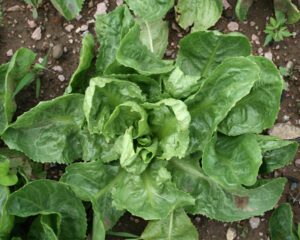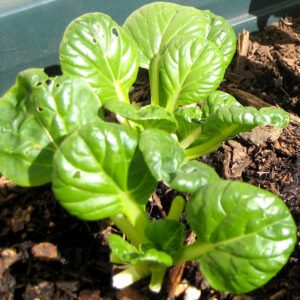Electroculture gardening is not a new gardening idea. Rather, it hat it’s roots in historical observations and hypotheses. But many people are becoming more interested in it in the recent times. Electroculture gardening is actually an innovative and experimental technique that involves the controlled application of electrical currents to plants and soil in order to stimulate plant growth and potentially enhance crop yields. This practice is based on the idea that plants, like all living organisms, have electrical properties and respond to external electrical fields.
In electroculture gardening, various electrical parameters are carefully manipulated to create specific electrical fields around plants (such as voltage, current, frequency, and duration). The goal is to influence biological processes within the plants, including nutrient absorption, root development, water movement, and growth hormone regulation.
The concept of electroculture gardening is not new and has its roots in historical observations and hypotheses. Some proponents of electroculture believe that introducing controlled electrical energy to plants can amplify their natural processes, resulting in benefits such as accelerated growth, improved nutrient uptake, enhanced pest and disease resistance, and more efficient water utilization.
However, it’s important to note that the science behind electroculture gardening is still in its infancy, and there is ongoing debate and research within the scientific community regarding its effectiveness and mechanisms.
While there are anecdotal reports of success, rigorous scientific studies and controlled experiments are necessary to validate these claims and fully understand the potential benefits and limitations of electroculture gardening. As with any emerging gardening technique, it’s advisable to approach electroculture gardening with a scientific mindset, open to experimentation and learning, while also considering safety precautions and responsible practices.
While the true potential of electroculture gardening is yet to be fully realized, it remains an intriguing and evolving field that continues to capture the curiosity of gardeners and researchers alike.

How to Start Electroculture Gardening?
Electroculture gardening technique involves the controlled application of electricity to plants and soil, with the potential to unlock growth-boosting benefits. If you’re a beginner intrigued by the electrifying possibilities of this approach, you’ve come to the right place. Here we are trying to list the essentials of starting electroculture gardening, from understanding the basics to embarking on your very own electrifying journey.
Step 1: Foundations of Electroculture Gardening
Before plunging into the world of electroculture, it is very important to grasp the foundational principles that underpin this technique. Electroculture gardening is rooted in the idea that plants, like all living organisms, exhibit electrical properties and respond to electrical fields. By strategically applying controlled electric currents, gardeners aim to enhance natural plant processes such as nutrient uptake, root development, and growth hormone regulation.
Step 2: Educate Yourself
Begin your electroculture journey by educating yourself about the science behind this technique. Familiarize yourself with the historical origins, key concepts, and potential benefits of electroculture gardening. As this field is still emerging, understanding the basics will help you make informed decisions as you experiment with this innovative approach.
Step 3: Research and Gather Resources
As a beginner, you have to do research and gather resources about this system. Delve into credible sources, academic papers, and gardening forums to gain insights from those who have explored electroculture gardening. If possible, gather the necessary resources, including books, equipment, and tools specifically designed for electroculture experiments.
Step 4: Choose Your Approach
Depending on your level of interest and resources, electroculture gardening can be started and operated in various ways. You can start with small-scale experiments using simple equipment or invest in more advanced systems designed for larger gardens. Decide whether you’ll focus on indoor potted plants, outdoor garden beds, or a combination of both.
Step 5: Ensure Safety
Ensuring safety is very important when working with electricity. Prioritize safety precautions by using quality equipment that adheres to safety standards.
Insulate electrical components properly, use grounded outlets, and wear appropriate protective gear. Remember that electricity can be dangerous, so take the necessary precautions to ensure your well-being.
Step 6: Start Small
As a beginner, it’s wise to begin with small-scale experiments to observe how plants respond to electrical stimulation, and finally you can start in large scale after learning fully.
Choose a few plants—preferably of the same species—and create a controlled environment for your experiments. This will help you understand the effects of different electrical parameters on plant growth.
Step 7: Understand Electrical Parameters
You must have to understand the electrical parameters for doing this gardening task. Key electrical parameters in electroculture gardening include voltage, current, frequency, and duration.
These parameters determine the intensity and duration of the electrical fields applied to your plants. Start with lower settings and gradually increase the parameters while closely monitoring plant responses. Keep detailed records of your experiments to track progress.
Step 8: Monitor Plant Growth
Monitoring plant responses is also very important in electroculture gardening system. Actually, the success of your electroculture experiments relies on careful observation.
Pay close attention to how your plants respond to electrical stimulation. Look for changes in growth rate, leaf color, flowering patterns, and overall health. Document your observations to identify trends and make informed adjustments.
Step 9: Right Soil Conditions
Knowing the condition of your soil is also very important. Soil composition plays a significant role in electroculture gardening. Monitor soil pH, nutrient levels, and moisture content. Adjust these factors to create an optimal growing environment for your plants. Healthy soil ensures effective transmission of electrical currents to the roots.
Step 10: Document and Analyze
Keep thorough records of your experiments, observations, and findings. Document the electrical parameters used, plant responses, and any changes you make throughout the process. This documentation will serve as a valuable reference for future experiments and contribute to the collective knowledge of electroculture gardening.
Step 11: Learn From Experts
Electroculture gardening is an ongoing journey of discovery. Embrace a learning mindset and be open to adapting your approach based on the outcomes of your experiments. Not all plants or conditions may respond in the same way, so be prepared to fine-tune your techniques as you learn more about the unique interactions between electricity and plant growth.





